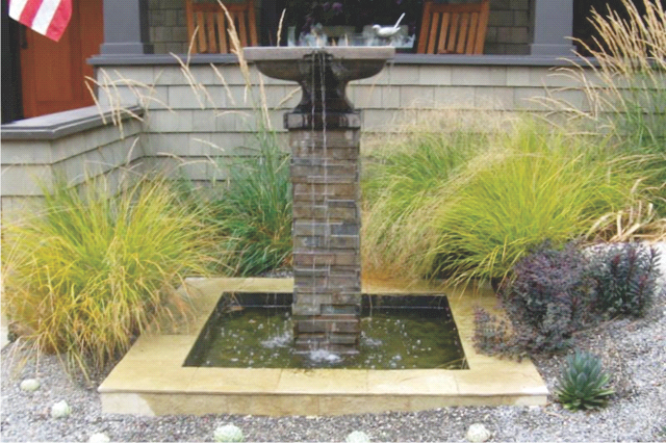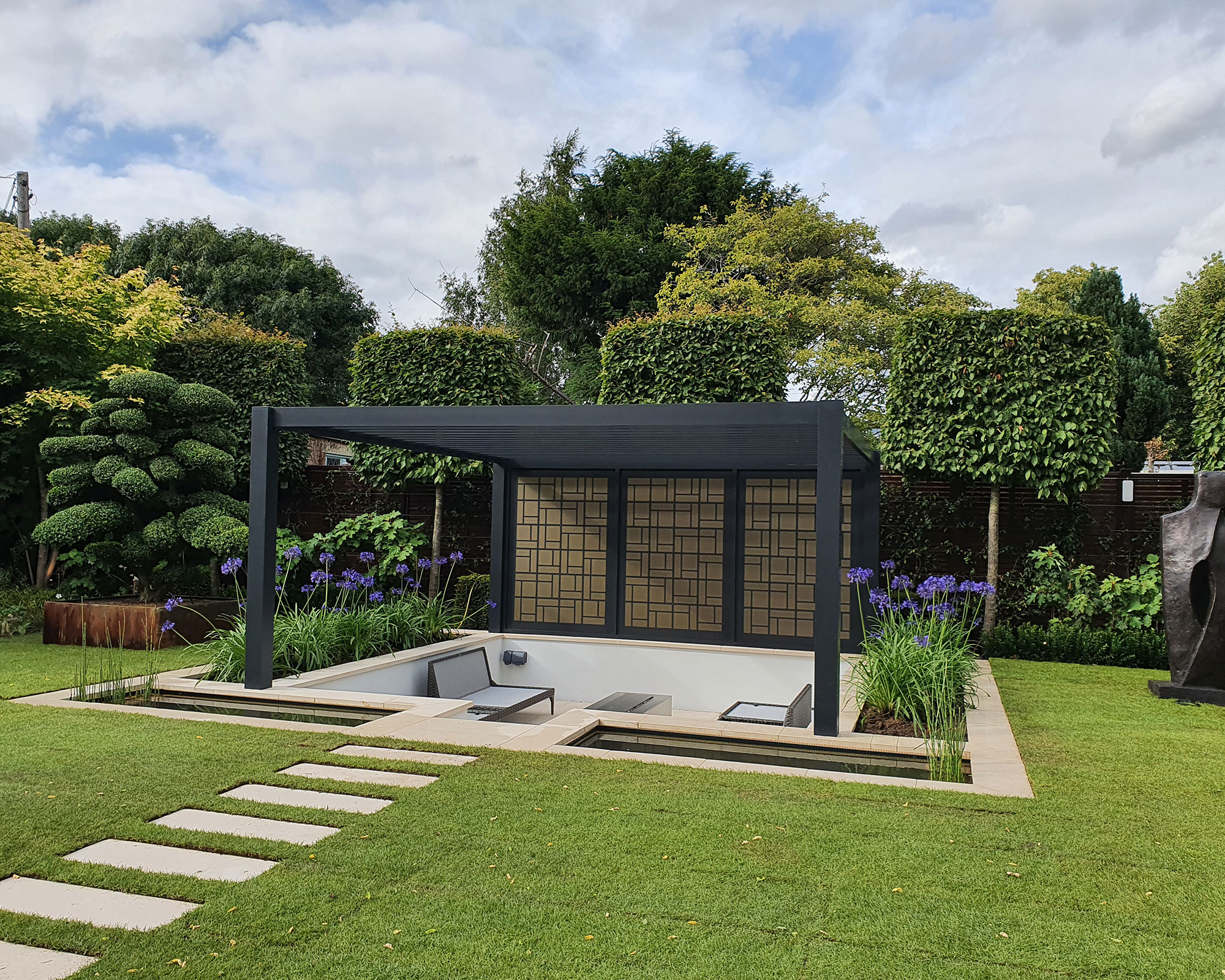See This Report about Hilton Head Landscapes
How Hilton Head Landscapes can Save You Time, Stress, and Money.
Table of ContentsExcitement About Hilton Head LandscapesThe Definitive Guide for Hilton Head LandscapesThe Ultimate Guide To Hilton Head LandscapesAn Unbiased View of Hilton Head LandscapesGetting The Hilton Head Landscapes To WorkThe Basic Principles Of Hilton Head Landscapes Facts About Hilton Head Landscapes RevealedAll about Hilton Head Landscapes
Type compatibility is additionally a major element of unity in designone or 2 noticeably different types are excellent for comparison and emphasis, but normally all other kinds must have some resemblances for a merged look. Structure refers to how coarse or fine the surface of the plant or hardscape product really feels and/or looks.
Examples of plants with coarse appearance include philodendrons, agaves, bromeliads, hollies, palms, and hydrangeas. Qualities that create fine structure include tiny foliage; slim, strappy leaves (lawns) or high, slim stems; little, dense branches and little branches; long stems (vines); and little, fragile blossoms.
The Only Guide for Hilton Head Landscapes
A lot of plants are moderate structure, in that they can not be defined as having either rugged or great texture. Medium-textured plants act as a background to link and combine the crude- and fine-textured plants.

To make a room feel smaller, position the coarse appearances along the outer border and the great textures closest to the audience. The information of the rugged structure makes the plants show up closer and makes the space feel smaller. The perceived texture of plants can also change with the range from the plant.
9 Easy Facts About Hilton Head Landscapes Shown
Bold colors raise the contrast and make the structure appear coarser, while low-key colors can flatten appearance. Hardscape with a rugged texturesuch as extremely rough rocks and vibrant, large timberstends to make all plant material show up more average distinctive. Developers often establish a texture research (Number 8) theoretically to help determine the arrangement of plant materials.
Color in plant product and hardscape includes interest and variety to the landscape. Shade is the most conspicuous aspect in the landscape and is generally the focus of the majority of house owners; nevertheless, it is likewise the most temporary element, normally lasting only a couple of weeks a year for individual plants.
7 Easy Facts About Hilton Head Landscapes Explained
A basic summary of the shade wheel consists of the 3 primary shades of red, blue, and yellow; the 3 second colors (a mix of two primaries) of environment-friendly, orange, and violet; and 6 tertiary shades (a mix of one surrounding primary and secondary shade), such as red-orange. Shade theory explains the relationship of colors to each other and how they ought to be used in a structure.

Comparable (often called harmonious) color plans are any type of 3 to 5 shades that are surrounding on the shade wheel, such as red, red-orange, orange, yellow-orange, and yellow, or blue, blue-violet, and violet (landscapers in bluffton sc). The colors relate to each other due to the fact that they commonly consist of 2 key shades blended to develop an additional and 2 tertiary shades, which means they share common buildings
Complementary colors are typically discovered naturally in blossoms; a typical pair is yellow and violet. Color is located in the flowers, foliage, bark, and fruit of plants.
An Unbiased View of Hilton Head Landscapes
Eco-friendly vegetation in all its different tones is the dominant color by amount, but various other colors catch attention much more readily since of their high contrast to the color green. Color is additionally found in buildings, rocks, pavers, timber, and furniture. A lot of colors in natural products, such as rock and wood, are normally muted and have a tendency to be variants of brownish, tan, and pale yellow.
Colors have residential or commercial properties that can affect emotions, spatial perception, light quality, equilibrium, and focus. Cool colors often tend to be soothing and ought to be utilized in areas for leisure and tranquility.
Unknown Facts About Hilton Head Landscapes
The "temperature level" of shades can additionally impact the perception of range. Great colors have a tendency to recede and are regarded as being farther away, making an area feel bigger. Warm shades tend to breakthrough and are viewed as being more detailed, making a room feel smaller. Color can also be made use of to capture focus and direct views.
Intense yellow, which has the highest possible intensity, additionally has a high contrast with all various other colors (commonly described as a "pop" of color) and need to be used moderately. A percentage of extreme shade has as much aesthetic weight as a big quantity of an extra subdued or weak shade.
Similar (in some cases called unified) color design are any type of 3 to 5 shades that are adjacent on the color wheel, such as red, red-orange, orange, yellow-orange, and yellow, or blue, blue-violet, and violet. The colors are associated to every various other due to the fact that they generally include two primaries blended to create a secondary and two tertiary colors, which indicates they share usual homes.
Rumored Buzz on Hilton Head Landscapes
They have a tendency to have high comparison between them. The most common collections are violet and yellow, red and green, and blue and orange. Complementary colors are usually found normally in blossoms; a common pair is yellow and violet. Shade is located in the blossoms, vegetation, bark, and fruit of plants.
Environment-friendly foliage in all its different tones is the dominant color by quantity, however various other shades catch attention quicker as a result of their high comparison to the shade eco-friendly - bluffton landscaping - https://old.bitchute.com/channel/Zj8gnEYIqDqK/. Shade is also found in structures, rocks, pavers, timber, and furniture. Most shades in natural materials, such as rock and wood, are usually soft and tend to be variants of brown, this tan, and pale yellow
Hilton Head Landscapes Can Be Fun For Everyone
Shades have properties that can influence feelings, spatial perception, light high quality, equilibrium, and emphasis. Trendy shades tend to be calming and need to be utilized in locations for leisure and calmness.
Great shades have a tendency to recede and are perceived as being farther away, making an area feel bigger. Color can also be utilized to capture attention and straight sights - https://moz.com/community/q/user/h1tnhdlndscps?_=1719959081810.
For instance, bright yellow, which has the highest strength, also has a high comparison with all various other shades (often called a "pop" of color) and ought to be conserved. A little amount of extreme color has as much aesthetic weight as a big amount of a much more subdued or weak color.